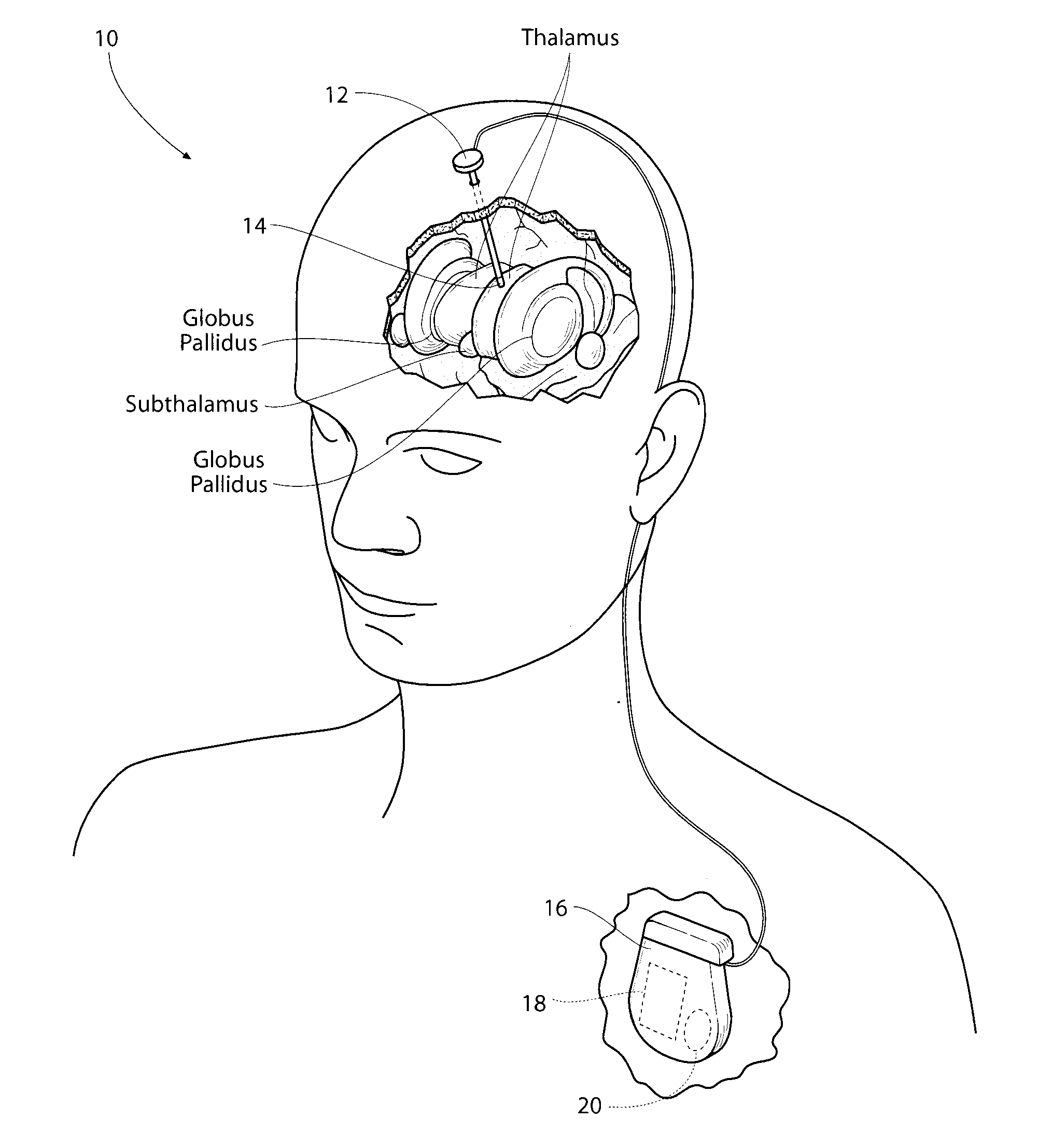Non-regular electrical stimulation patterns for treating neurological disorders
a non-regular electrical stimulation and neurological technology, applied in the field of neurosurgery, can solve the problems of less effective suppression of tremor by non-regular stimulation patterns, less effective relief of bradykinesia by random stimulation patterns, less effective relief of bradykinesia by random stimulation patterns,
- Summary
- Abstract
- Description
- Claims
- Application Information
AI Technical Summary
Benefits of technology
Problems solved by technology
Method used
Image
Examples
working example
[0068]This invention has been used in treating or relieving symptoms of Parkinson's disease. The patterns of stimulation were designed to expose the effects of certain characteristics of the stimulation and yielded non-regular, high-frequency patterns of stimulation that significantly improved motor performance when compared to regular stimulation at a comparable frequency.
[0069]The way in which the non-regular patterns of stimulation were designed and / or configured for the present working example differentiates the present methodology from all previous work regarding electrical stimulation for the treatment of PD. The non-regular patterns of stimulation were chosen because they contained features that may be important to the neural code in the DBS target area. These features included: bursts, pauses, gradual increments and / or decrements in the interpulse interval, and other pulse structures thought to be important for communicating information between neurons in the brain.
[0070]In ...
PUM
 Login to View More
Login to View More Abstract
Description
Claims
Application Information
 Login to View More
Login to View More - R&D
- Intellectual Property
- Life Sciences
- Materials
- Tech Scout
- Unparalleled Data Quality
- Higher Quality Content
- 60% Fewer Hallucinations
Browse by: Latest US Patents, China's latest patents, Technical Efficacy Thesaurus, Application Domain, Technology Topic, Popular Technical Reports.
© 2025 PatSnap. All rights reserved.Legal|Privacy policy|Modern Slavery Act Transparency Statement|Sitemap|About US| Contact US: help@patsnap.com



